Details released of dramatic police shootout with murder suspect near Timmins, Ont.
Ontario's Special Investigation Unit has cleared police actions in a shootout with a murder suspect last June that left one police officer with bullet wounds to his neck.
The June 12 incident ended on an island on Night Hawk Lake with the capture of armed murder suspect Lucas MacDonald.
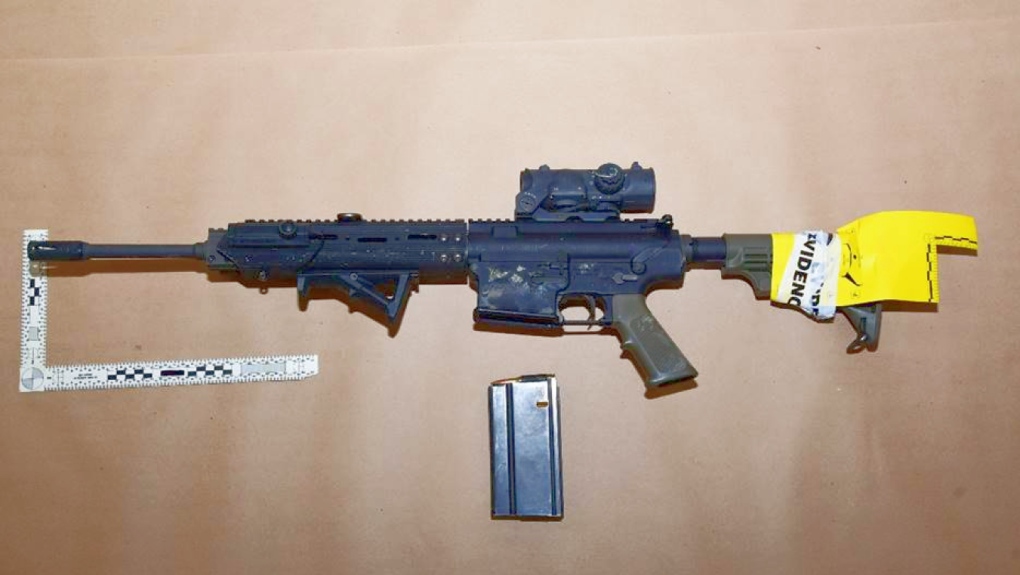 The Armalite AR10A-4 used by one of the OPP officers in the exchange of gunfire. (SIU photo)
The Armalite AR10A-4 used by one of the OPP officers in the exchange of gunfire. (SIU photo)
Officers with the Ontario Provincial Police tactical response unit (TRU), including boats and a helicopter, checked the area in the morning but were unable to find MacDonald.
"The complainant (MacDonald) was operating a canoe on the lake and was armed with a .22-caliber rifle," the SIU said in its incident narrative.
"At one point, he came ashore near a camp on the southwest side of the lake."
He was spotted by a civilian, who alerted police about a suspicious man who was operating a canoe on the lake despite bad conditions.
Three officers in the helicopter approached the camp when MacDonald began firing at them. It was around 11:48 a.m.
At that point, three of the officers went with the camp owner in his boat to meet up with OPP boats already on the water. By this time, MacDonald was canoeing to a small island west of Moose Island.
"The plan at this time was to have the OPP-operated boats … sail around the island from a distance," the SIU said.
"The complainant was to be contained on the island pending the arrival of additional police resources."
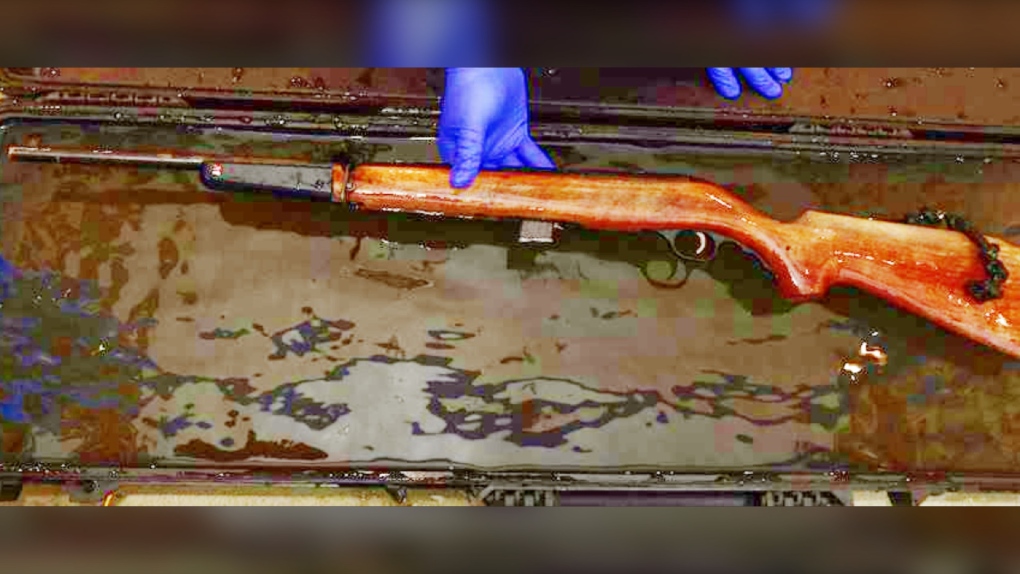 The .22 calibre rifle used by murder suspect Lucas MacDonald, who fired on OPP officers last June on an island on Night Hawk Lake. One officer was struck in the neck twice. (SIU photo)
The .22 calibre rifle used by murder suspect Lucas MacDonald, who fired on OPP officers last June on an island on Night Hawk Lake. One officer was struck in the neck twice. (SIU photo)
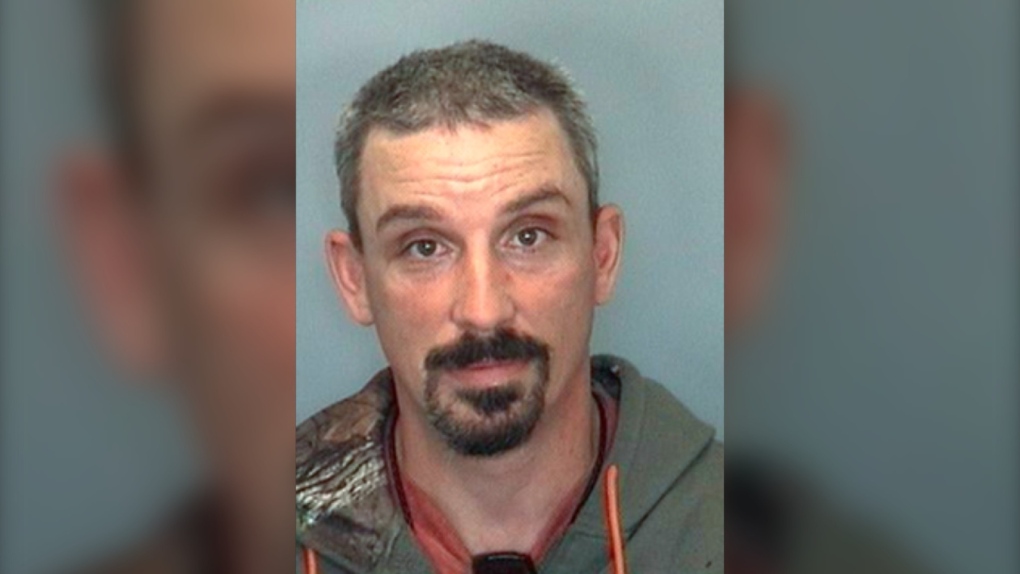 Ontario Provincial Police are looking for Lucas MacDonald. He is 5-foot-8, with dark collar-length hair with some grey and a thin short beard. When last seen, he was wearing a ball cap with a bandana underneath it and wrap-around sunglasses. (Supplied/Ontario Provincial Police)
Ontario Provincial Police are looking for Lucas MacDonald. He is 5-foot-8, with dark collar-length hair with some grey and a thin short beard. When last seen, he was wearing a ball cap with a bandana underneath it and wrap-around sunglasses. (Supplied/Ontario Provincial Police)
However, the motor of one of the police boats stopped working and the boat began drifting toward the island. The second police boat arrived to help and as police worked on the engine, MacDonald opened fire on them.
At around 12:56 p.m., an officer operating a drone from one of the police boats was shot twice in the neck.
"The complainant had started to fire at the boat from the island," the SIU said.
"It is unknown how many shots in total he discharged, but spent cartridge cases later located on the island suggests he fired at least five times."
Police returned fire
Police returned fire toward the island. The shooting continued as one police boat towed the other away from the island. The injured officer was lifted out of the boat and onto the rocks. A short time later, the OPP helicopter airlifted him to safety to receive medical attention.
- Download the CTV News app now
- Get local breaking news alerts
- Daily newsletter with the top local stories emailed to your inbox
"TRU officers maintained their position near that location, some 300 metres east of the island on which the complainant was located," the SIU said.
"Some time passed and an officer exclaimed something to the effect of, 'Gun. He has something in his hands.'"
Police fired twice when they spotted MacDonald coming toward them in the canoe. But as he neared, MacDonald held a paddle above his head "as if he were surrendering."
Officers approached the canoe, still on the water, and took him into custody.
"I hope your buddy’s OK, by the way," MacDonald told police after his arrest.
"I didn’t mean to hit him."
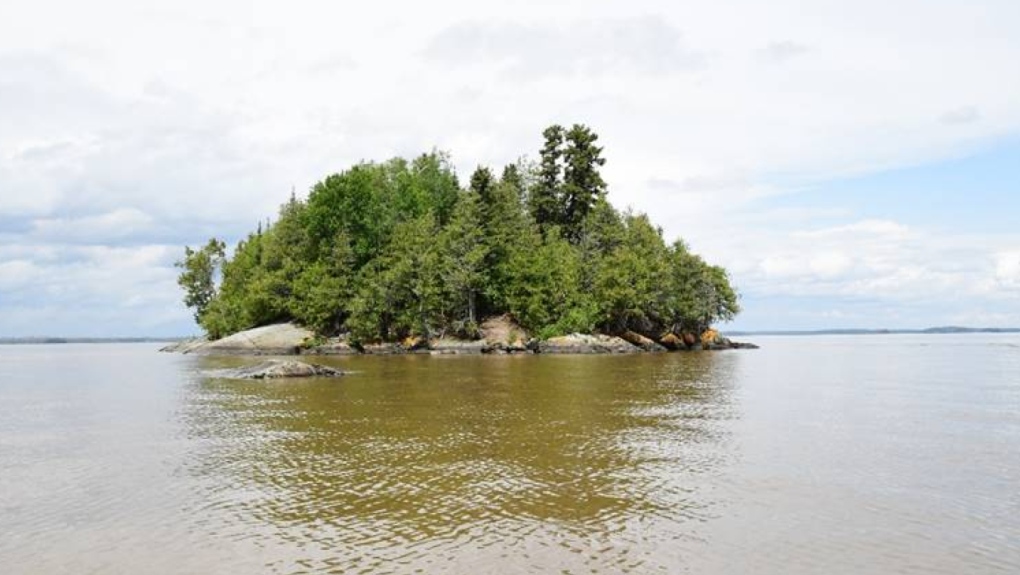 The exchange of fire took place on this island on Night Hawk Lake. (SIU photo)
The exchange of fire took place on this island on Night Hawk Lake. (SIU photo)
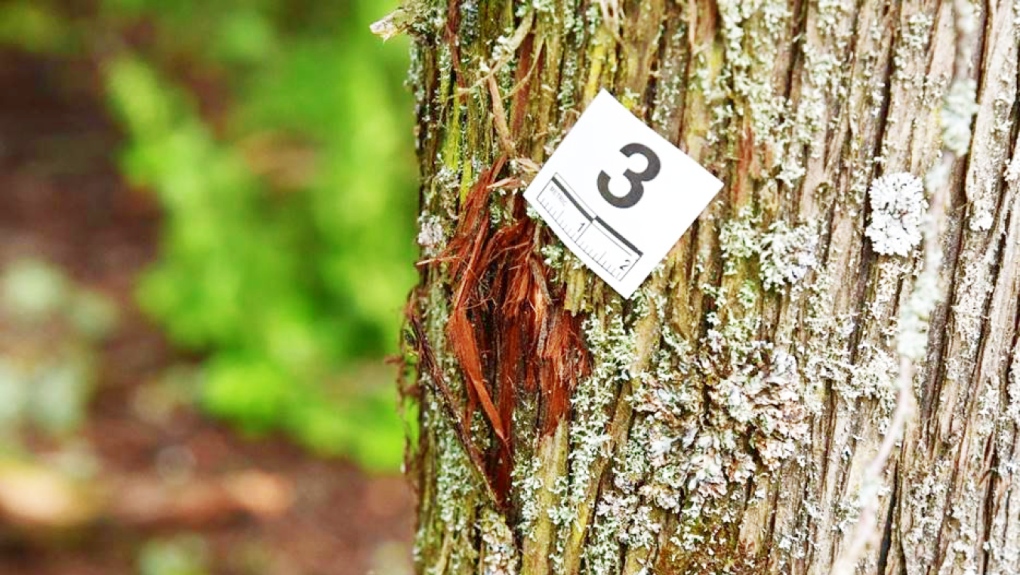 Bullet hole is seen in a tree on the island on Night Hawk Lake. (SIU photo)
Bullet hole is seen in a tree on the island on Night Hawk Lake. (SIU photo)
While the SIU automatically investigates when police fire their weapons, director Joseph Martino said there was no evidence police did anything wrong.
"The OPP officers were engaged in a lawful police operation attempting to locate and arrest a man – the complainant – they had reason to believe was involved in a recent murder," Martino wrote.
Defending injured colleague
The evidence shows that police fired in self-defence – and in defence of their colleague who had been injured by gunfire.
"The complainant was concealed on a heavily wooded island and, as far as the officers would have been understandably concerned, still a real and present danger," he said.
"The initial volley of police gunfire was a direct response to shots fired in their direction by the complainant. Clearly, faced with a lethal threat, a resort to lethal force of their own was a rational and proportionate response. The same may be said of the subsequent police gunfire."
It also made sense for police to fire at the otherwise uninhabited island, which could be described as "suppression gunfire."
While police shot at MacDonald when he was paddling toward them to surrender, there was no way for them to know his intention and they believed he was still armed.
"For the foregoing reasons, there is no basis for proceeding with criminal charges in this case," Martino said.
"The file is closed."
Read the full decision here.
CTVNews.ca Top Stories

'Canada will be absolutely fine': Justin Trudeau, his ministers and Pierre Poilievre congratulate Donald Trump
Canadian Prime Minister Justin Trudeau and members of his cabinet congratulated Donald Trump Wednesday morning on his second United States presidential election win, amid questions about how the federal government intends to navigate a second term.
What might Donald Trump's election win mean for Canadians
Following president-elect Donald Trump's decisive election victory, there are sure to be significant knock-on effects for Canada. Here's a look at the different areas in which a second Trump presidency may affect Canadians.
4 ways in which Donald Trump's election was historic
Donald Trump's election victory was history-making in several respects, even as his defeat of U.S. Vice-President Kamala Harris prevented other firsts. She would have been the nation's first Black and South Asian woman to be president.
Kamala Harris concedes: Here's what she said in her speech
Democratic Vice-President Kamala Harris has conceded the U.S. election to Republican Donald Trump.
Who won the popular vote? U.S. election vote totals from the past 40 years
Donald Trump won the U.S. presidency on Tuesday, and as of Wednesday morning, was also ahead in the popular vote. Historically, though, the candidate with the most votes hasn’t always won the contest.
Canada orders wind up of TikTok's Canadian business, app access to continue
Canada ordered the dissolution of TikTok's Canadian business after a national security review of the Chinese company behind the social media platform.
Newfoundland hockey player suspended, banned from local arena after off-ice fight with fan
A combination of a thrown stick and thrown punches have given a senior hockey player in Newfoundland a three-game suspension and an indefinite ban from one of his league's six arenas.
Kingston, Ont. doctor fighting OHIP clawback of $660K in pandemic vaccination payments
A Kingston doctor is in a dispute with the Ontario Ministry of Health, which is trying to clawback more than $600,000 in OHIP payments.
Read the full transcript of Donald Trump's victory speech
The former U.S. president and now president-elect addressed a crowd of supporters at his campaign headquarters in West Palm Beach, Fla., shortly after 2:30 a.m. EST, Wednesday morning.

































